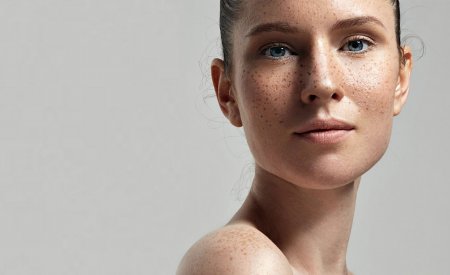Hyperpigmentation & Winters
What is Hyperpigmentation?
- Hyperpigmentation is the term used to describe skin areas that turn darker than the surrounding skin.
- Despite being a prevalent dermatologic disorder that affects all skin types, hyperpigmentation is especially noticeable in people with darker skin.
- It develops when the skin produces an excessive amount of melanin, the pigment that gives skin its colour. Skin cells known as melanocytes produce more melanin pigment when exposed to sunlight.
There are various types of hyperpigmentation; the most common types include:
- Melasma:
- Melasma may develop during pregnancy and generally occurs due to hormonal changes.
- Hyperpigmented patches can appear anywhere on the body, but the face and stomach are the areas where they frequently occur.
- Sunspots:
- These appear on the areas frequently exposed to sun like face and hands.
- Post-inflammatory hyperpigmentation: it occurs due to injury or inflammation from acne or eczema
1. Signs of Hyperpigmentation
Common symptoms of hyperpigmentation include,
- Patches in various tones of black or brown
- A skin injury or inflammatory condition causes the discolouration to appear.
- After exposure to sunlight, discoloured spots become darker.
- Raised dark spots that are growing
2. Causes of Hyperpigmentation
- Sun exposure
- Inflammation of skin
- Melasma
Certain Risk factors increases risk for hyperpigmentation such as:
- Oral contraceptive use or pregnancy
- Darker skin type
- Drugs that increase sensitivity to the sunlight
- Reactions to drug use such as Non-steroidal anti-inflammatory medicines (NSAIDs), Phenytoin, Antimalarial drugs, Antipsychotic drugs, Cytotoxic drugs, Tetracyclines
- A rare endocrine disease called Addison’s disease
3. How winter affects hyperpigmentation?
- Exposure to the sun's UV rays can account for up to 80% of visible ageing, as opposed to the normal ageing process.
- Dry weather, cold temperatures, and decreased humidity can cause dry patches on the skin and worsen skin conditions such as acne, psoriasis, and eczema, leaving behind skin hyperpigmentation.
- Melanin levels increases because of inflammation & injury to the skin cells, which releases the pigment deeper into the skin layers and between skin cells, resulting in skin discoloration, sunspots, darker pigments, or patches of darkened skin.
4.Tips for Managing Hyperpigmentation during the winter
- Sunscreens:
- Sun protection is the first element of the treatment.
- Choosing a sunscreen with a ‘broad spectrum’ (UVA and UVB) range is necessary to block harsh sunrays, which leads to tanning and hyperpigmentation.
- Sun Protecting Factor (SPF) of 30 to 50 is recommended to achieve maximum protection.
- The best strategy to prevent hyperpigmentation is to consistently apply sunscreen to skin that has been exposed to the sun and to re-apply every two hours.
- Wearing hats or clothing to prevent sun exposure:
- Physical protective measures include wearing a hat/clothing or using an umbrella while going outside to prevent damage to the skin caused by sun.
- Moisturization:
- The skin should always be kept moisturized during the winter, especially if it is normal to dry skin.
- Applying a moisturizing cream to the skin enhances the skin's capability to retain moisture. (Explain what are the benefits of moisturised skin and how it helps in hyperpigmentation)
- By switching from lighter lotions to creams that include ceramides, one can improve their skin texture particularly in the dry weather.
- Chemical peels:
- By means of chemical peels, these physical therapies remove or peel away the hyperpigmented skin to reveal the healthier skin underneath. (Explain importance of sunscreen in the peels)
- Cryotherapy:
- Cryotherapy removes the pigment-producing cells in the skin, resulting in a permanent pale patch at the treatment site. (The spot will look lighter as the skin heals.)
- Laser therapy:
- In laser treatment, pigments and scars are reduced in appearance, skin colour is normalized, and the skin is tightened.
- Avoid scratching at dry spots:
- Picking at dry skin can exacerbate acne and cause scarring, which could make hyperpigmentation more severe.
- Instead, applying mild moisturising creams, especially at night, soothes irritated or dry skin.
- Scrubbing:
- Scrubs and masks also aid in the removal of dead skin cells and the pigment stored within them. As a result, the black spots gradually lighten.
-
Bioderma offers range of skincare products for different skin types such as sensitive skin, combination to acne-prone skin, normal dry, irritated to atopic skins.
